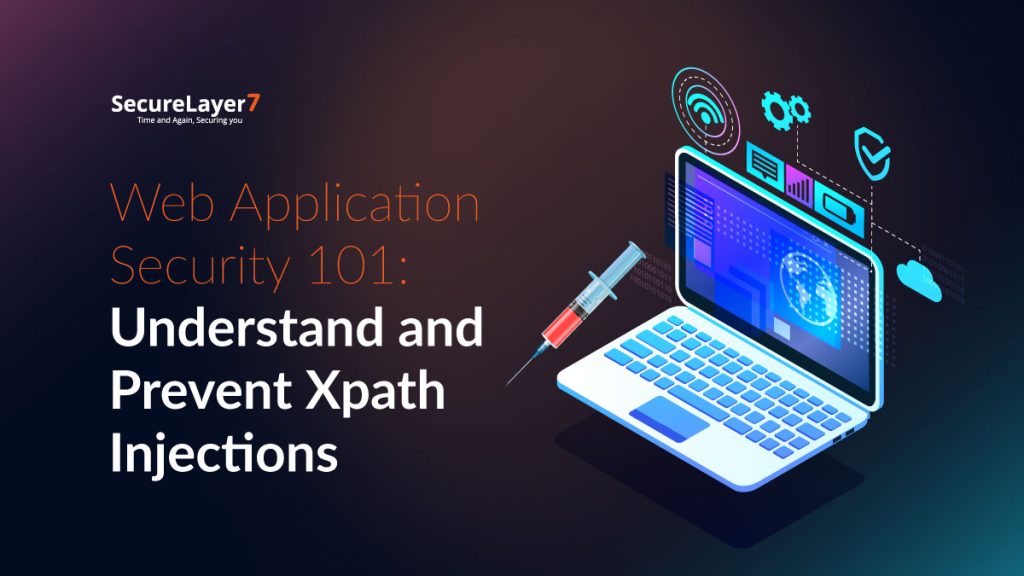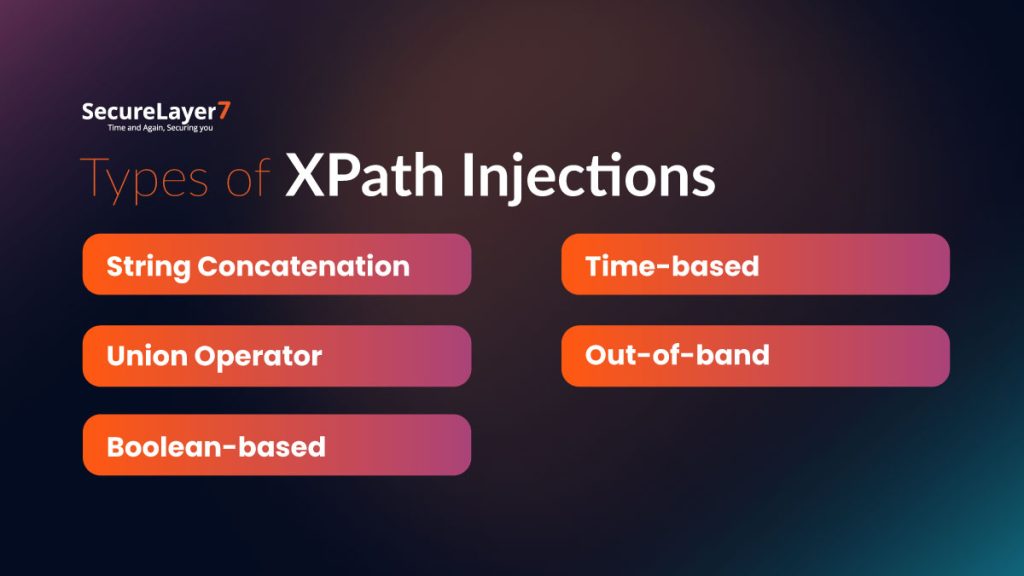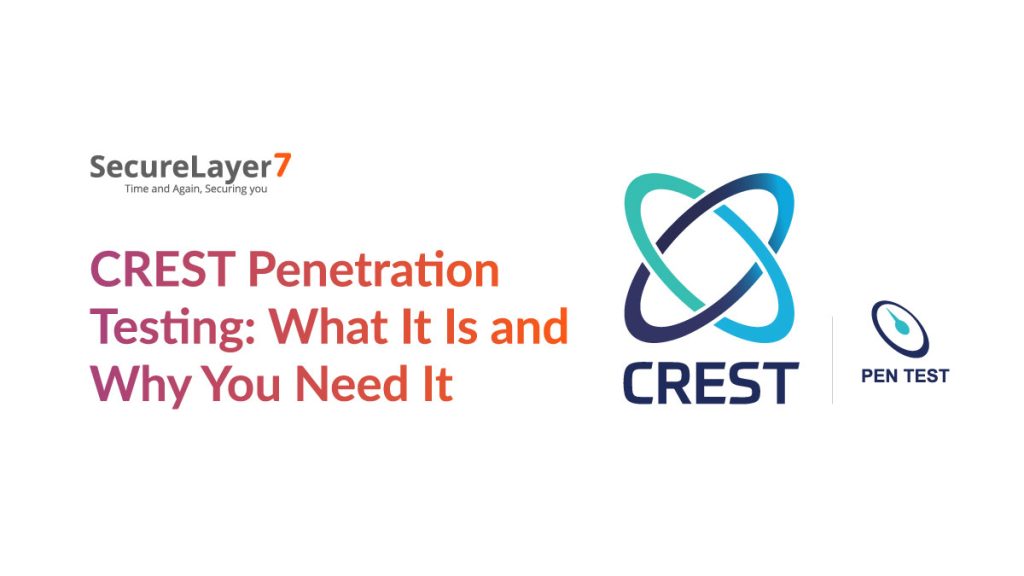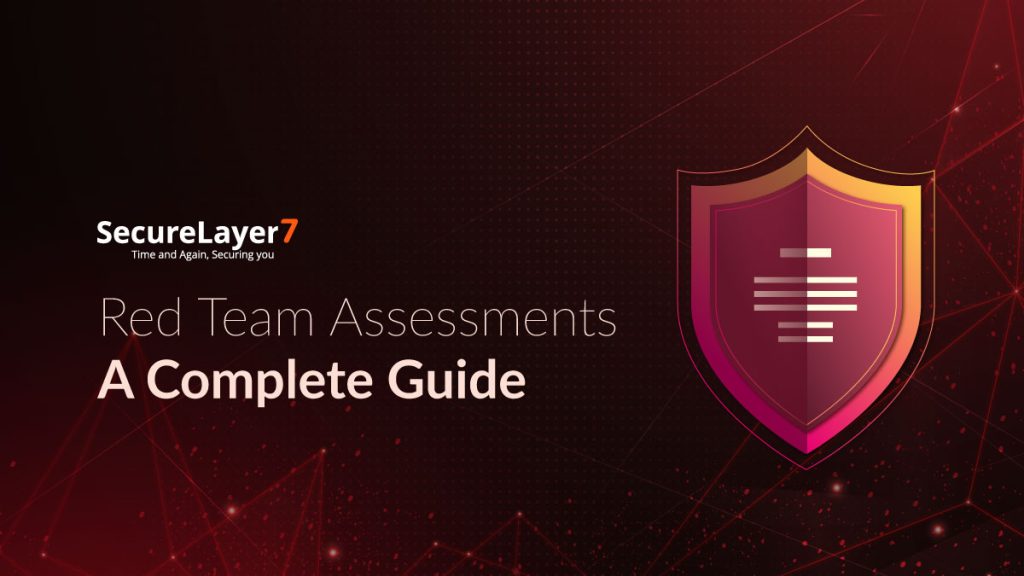
Red Team Assessments: A Complete Guide
April 5, 2024
The Ultimate Guide to Choosing the Best Red Team Assessment Partner
April 17, 2024
XPath (XML Path Language) is a query language that identifies particular elements in an XML document. Internet-based applications use it to move through the different nodes of an XML document and extract data from within. It should also be noted that hackers can take advantage of this powerful language if best security practices are not implemented.
XPath injections, or XPath attacks, are cyber-attacks directed at vulnerabilities in web apps using XPath queries. Such attacks involve manipulating user input to modify the initial XPath query, allowing hackers to access private data or initiate unwanted activities on the app.
The danger of XPath injections lies in the ability to bypass traditional security measures like firewalls and input validation checks. They exploit the application’s legitimate functionality rather than any weaknesses in its code.
XPath Injection: An Overview
An XPath injection flaw on a website is not just a vulnerable point, it’s a ticking time bomb. Developers using XML languages like XPath enable navigation through XML structures by selecting certain elements only. However, when user inputs are not appropriately sanitized or inserted into XPath queries, a vulnerability for an XPath injection attack is created, potentially leading to severe exploitation.
The process involves hackers manipulating user inputs and altering the structure of XPath queries. As a developer, your role is crucial in preventing this. Unauthorized access to sensitive information is not just a threat; it’s a challenge that you have the power to overcome to ensure your company’s security.
XPath injection functions by taking advantage of loopholes in web applications that use user input to form XPath queries. In a generic situation, an XML document is searched for data using an XPath query created from user-provided information, such as identifiers or search terms.
Following are the best practices for mitigating XPath injection vulnerabilities.

Input Validation
All user inputs must be validated to ensure they are in the expected format and free from malicious content. This is important to prevent attackers from injecting harmful code into XPath queries.
Parameterized Queries
Use parameterized XPath queries, which treat user input as data, not executable codes. Parameterization can help avoid problems, including altering the logic of a query and obtaining unauthorized information.
Sanitization
Sanitize user input by scrubbing out or encoding special characters that can manipulate XPath queries like `’` or `&.` This ensures that the injected attacks cannot take place, thus making the user’s entries safe to use.
Regular Security Audits
Regular security audits and code reviews should be carried out so that any possible weaknesses, like XPath injection, can be pinpointed and covered. The proactive approach may reduce potential risks, thereby saving web applications from exploitation.
How XPath Injection Works
To understand how XPath injections work, consider an example of a web application that stores user information such as usernames and passwords in an XML database and uses XPath queries to retrieve this information based on user input.
For instance, what if an attacker fills in or 1=1 – instead of a proper username?
Below is how the query will look like:
“SELECT * FROM users WHERE username=” or 1=1–‘ AND password=”
This means: “Select all users whose username is empty string or always true.” Therefore, an attacker would have access to all the records in the database without knowing any valid username and/or password.
For another instance, consider a web application that creates an XPath query based on user input to retrieve user-specific data from an XML file. By manipulating the input, an attacker could inject an expression that will extract all user’s data rather than only one particular user’s data. This could lead to disclosing sensitive information like personal data or passwords.
Moreover, attackers may utilize XPath injection to evade authentication mechanisms. By injecting a malicious expression that always yields true, the attacker may deceive the application into providing access to restricted areas or functionalities without permission.
Why are XPath Injections Dangerous?
XPath injections are a type of security loophole in web applications that, when not fixed, can lead to grave consequences. XPath is a commonly used language for searching and navigating through an XML document, which makes it a popular tool for developers trying to fetch and manipulate data from the Internet. On the other hand, if left unsecured, this flexible language can be misused by criminals to cause harm or steal confidential information.
Access to Sensitive Information
One of the dangers associated with XPath injections is access to sensitive information. As hinted above, XPath is widely employed for querying and fetching data from databases in web applications. An attacker could use an XPath injection vulnerability to tamper with or circumvent the intended query logic, thereby allowing him/her to get unauthorised data. Such may encompass sensitive user details such as login credentials, personal information, financial records, or proprietary business information.
Elevation of Privileges
Another technique intruders use to enhance the privileges on the system is XPath injections. This is done by injecting harmful code into an application’s XPath queries, enabling them to bypass authentication procedures and log in as an admin or a privileged user so they can have total control over all the application features and indulge in numerous illegitimate activities.
System Compromise
Xpath Injections also present a notable risk that may lead to complete system compromise. If attackers use XPath injection vulnerabilities to gain administrative access, they can perform remote commands on the application’s host server. This could allow for further exploitation of other vulnerabilities or planting malware onto systems.
Business Impact
Apart from compromising confidential information and unauthorized access, XPath injections pose severe challenges to businesses that rely on web applications.
An attack exploiting this vulnerability could disrupt essential services, cause financial loss due to theft or fraud incidents, damage the organization’s reputation, and result in legal consequences.
The XPath injections seriously threaten web application security, if not dealt with comprehensively, they will result in various dangerous outcomes. Hence, developers must understand how these vulnerabilities work and implement robust security controls to protect against them. Moreover, regular vulnerability assessments and penetration testing for web applications will help discover and solve potential XPath injection flaws before an attacker turns them into reality.
Types of XPath Injections
XPath injections can take many different forms in online applications. This section will cover some of the most prevalent kinds and prevention techniques. Developers must comprehend the various kinds of XPath injections to secure the web applications. Safeguarding sensitive data against compromise can be achieved using best practices such as parameterized queries, proper input validation, and limiting database access privileges.
Following are the types of XPath injections:

String Concatenation
This type of XPath injection occurs when user input is directly concatenated into an XPath query without any sanitization or validation. Malicious users can manipulate the XPath query and retrieve sensitive information from the database. To prevent this, it is important to validate user input and use parameterized queries instead of concatenating strings.
Union Operator
The Union operator is another technique attackers use to exploit XPath injections. By inserting a union operation in user input, attackers can combine a valid query with their own malicious code, allowing them to bypass authentication mechanisms and gain access to unauthorized data. To prevent this, developers should limit privileges on database accounts and implement strict input validation.
Boolean-based
One attack that implements this concept is using Boolean operators like “or” or “and” that manipulate an XPath query’s logic. By controlling the inputs, attackers can force the application to run unintended queries, which could disclose sensitive information or even compromise the whole system. Thus, developers should implement mechanisms like strong input validations and character restrictions for any inputs that may alter an XPath query’s logic.
Time-based
In time-based attacks, hackers exploit vulnerabilities in server-side processing times to carry out blind SQL injection attacks through XPath queries. Such attacks depend on injecting commands that cause long delays in server response time (e.g., sleep commands) and then checking whether their injected code worked based on how fast the server responds. Database access privileges must be limited to prevent these attacks, and server settings must be updated regularly.
Out-of-band
This type of attack utilizes external channels (such as DNS requests) to communicate with a remote listener controlled by the attacker. By inserting code into XPath queries that cause the application to make these external requests, attackers can extract or modify sensitive information. To prevent this, developers should implement strong input validation to prevent unintended commands from being executed.
Impacts of XPath Injections
XPath injections can have severe consequences for both users and organizations if successful. Attackers can gain unauthorized access to sensitive data such as personal information, financial details, and login credentials stored within databases.
In addition, XPath injections can also lead to the complete compromise of the web application. Attackers can modify or delete data, deface the website, or even install malware that can infect user’s systems.
The impacts of XPath injection attacks can be severe, potentially leading to various security breaches and compromising the integrity of web applications.
Unauthorized Access
One of the first things an attacker will do after launching an XPath injection is try to access your private information. They will grab anything they can handle–usernames and passwords, personal files, or any other sensitive data stored in XML documents. They will use this info for identity theft or worse.
Data Manipulation
XPath injection attacks can also manipulate data stored in XML documents. They might start tampering with your data if they still have time before being detected. User permissions could be changed, or critical transaction records could be deleted.
Bypassing Authentication
Normally, authentication mechanisms keep attackers out of restricted areas of your application (like administrator panels). However, once inside, an attacker could perform actions reserved only for privileged users.
Information Disclosure
After successfully breaking into your system, an attacker might decide they prefer notoriety over funds stolen through identity theft. They might disclose all kinds of protected information, like financials or proprietary secrets found in XML documents.
Application Compromise
An attacker might go all out when breaching an application – gaining complete control. Once inside, they can execute any code they want, install malware onto client machines, or perform malicious activities.
Techniques for Detecting and Preventing XPath Injections
Xpath injections are one of the most common attacks on web applications. A code injection targets the XPath query language used to extract data from XML documents. These attacks can lead to severe consequences such as unauthorized access, data exposure, and even complete system compromise.
Detecting Xpath injections requires employing a multi-layered defence approach encompassing coding practices and security tools. Integrating these methods into your development will ensure protection against possible vulnerabilities and help you secure users’ information on your web app.
To protect your web application from Xpath injections, it is essential to implement effective detection techniques. Here are some methods that can help in identifying and preventing Xpath injections:
Regular Expression (Regex) Pattern Matching
Regex pattern matching is one of the main methods of finding Xpath injections. In this case, you can set rules that match against attack patterns or invalid characters in an XPath query. Then, you can use regex filters in your code to detect suspicious-looking questions and prevent them from being executed.
Blacklisting User Input
Blocklisting is yet another way of detecting Xpath injection by blocklisting on different levels within the codebase of a web application. However, more than this technique is needed since attackers can easily avoid these restrictions through other words or encoding their input. Like a process where one identifies specific indicators, such as ‘OR’ and ‘DROP TABLES’.
Web Application Firewalls (WAFs)
Web application firewalls (WAFs) are security solutions that sit between a web application and the layer of requests and responses of its users to inspect incoming traffic for any suspicious activities. WAFs serve as an effective method of detecting and blocking Xpath Injection Attacks since they can detect traffic patterns, prevent vulnerable input, and may even provide alerts about malicious attempts in real-time.
By mixing these techniques, you can greatly reduce the likelihood of Xpath Injections on your web application. However, it is important to conduct regular audits and update your security measures to defend yourself from new attack methods developed by hackers.
Tools for Testing and Mitigating XPath Injections
Tools for Testing XPath Injections
One tool that can help identify potential vulnerabilities in your application’s usage of Xpath queries is OWASP’s Zed Attack Proxy (ZAP). The tool also has a function designed specifically for checking common injections such as Xpath injections. By merely providing your application’s URL as the target, ZAP will go on and search all over your website just to find out if there are any vulnerabilities related to this particular attack vector.
Another powerful Xpath injection detection tool is Burp Suite Professional Edition’s Scanner module. It similarly comes with full-featured scanning functionalities including finding different types of injection attacks like SQL injection, cross-site scripting (XSS), and – of course – XPath injection.
Furthermore, special purpose tools such as XPath Helper can prove extremely helpful in identifying vulnerable points within your application’s codebase manually. Using this tool you can enter different payloads and observe the response from the server, allowing you to easily spot where potential Xpath injections may occur.
Mitigating Xpath Injections
It is important to do more than just test for possible vulnerabilities; a website should also have mitigation measures against Xpath injections. Input validation and sanitization is one common measure. By validating user input thoroughly and removing any malicious characters that might be there, the likelihood of successful Xpath injection attacks can be significantly diminished.
Another way to mitigate Xpath injections is the usage of prepared statements or parameterized queries in creating your XPath expressions. These techniques involve separating the query logic from user input hence making it difficult for hackers to tinker with the query itself.
While it may seem difficult for web applications to deal with Xpath attacks, there are many tools available that developers can use to find those vulnerabilities and try to prevent them. Nevertheless, it is vital that these tools are used together with a firm understanding of how an XSS attack operates as well as proper mitigations to defend effectively against such an assault.
Conclusion: Importance of Constant Security Monitoring and Updates
Malicious attacks on web applications have become more common with their increasing use for different purposes. XSS is a kind of attack that can really threaten the security of web applications.
There are severe consequences to an XPath injection such as loss or exposure of sensitive data, service disruption and reputational damage to both individuals and businesses. Therefore, organisations should focus on continuous security monitoring and updates in order to alleviate such intrusions.
You can identify potential threats at an early stage by closely watching your web applications for any suspicious activities or vulnerabilities. By doing this proactively, you will be able to act before hackers take advantage of any shortcomings.
Furthermore, periodically conducting audits by experienced personnel can expose any deficiencies within your existing security measures that require attention. Likewise, they can offer advice on additional steps towards improving the overall safeguarding against Xpath injections for your system.
Knowing about XPath injections is crucial in stopping it as a highly destructive form of cyber-attack in web applications. Nevertheless, taking preventive measures like continuously monitoring and updating security measures remains the key to keeping your web applications safe from these attacks. You cannot afford letting your personal or business information fall into the wrong hands thus importance always lies in making constant security monitoring and updates top priority for yourself, business and clients’ privacy respectively.
Stay alert, stay secure!
How Can Secure Layer Help?
In this era of digital interactions and transactions, protecting sensitive data and ensuring strong cybersecurity measures have become very important. In this fight, SecureLayer7 is a reliable partner who offers up-to-the-minute solutions to strengthen cyber defenses and mitigate risks.
SecureLayer7 has a rich catalogue of security services that are designed to solve various cybersecurity challenges. Their services include penetration testing, vulnerability assessments, security compliance and managed security services which cover all the needs that fall under cybersecurity requirements. SecureLayer7 enables companies to accurately identify, evaluate and remediate the security weaknesses by using modern tools and approaches.
Recognizing that one size does not fit all in cybersecurity, SecureLayer7 delivers customized solutions tailored to the unique needs and challenges of each client. Whether it’s devising a robust cybersecurity strategy, implementing security controls, or conducting specialized assessments, SecureLayer7 collaborates closely with organizations to develop bespoke solutions aligned with the objectives and risk tolerance levels.
Frequently Asked Questions (FAQs)
- What is an “XPath”?
XPath (XML Path Language) is a query language that identifies specific elements in an XML document. This is commonly used in web applications to navigate through different nodes of the XML document and extract data from it.
- What do you understand about XPath injections?
XPath injections, sometimes called XPath assaults, are types of web attacks that exploit the vulnerabilities of web applications deploying XPath queries. These attacks manipulate users’ inputs to change the original XPath query, thereby giving unauthorized access to sensitive data or performing maliciously on the application.
- How significant is constant security monitoring and updates to prevent XPath injections?
Ongoing security monitoring plus updates play a critical role in preventing XPath injections. By regularly keeping software up-to-date with the latest security patches and monitoring your web applications for any suspicious activities, you can address known vulnerabilities and protect against potential attacks.
- Are there any guidelines for preventing XPath injection?
Some best practices for preventing XPath injections include validating all user inputs, using parameterized queries, sanitizing user input and conducting periodic code audits. In addition, keep updated with current security trends and techniques to stay one step ahead of possible attacks.


